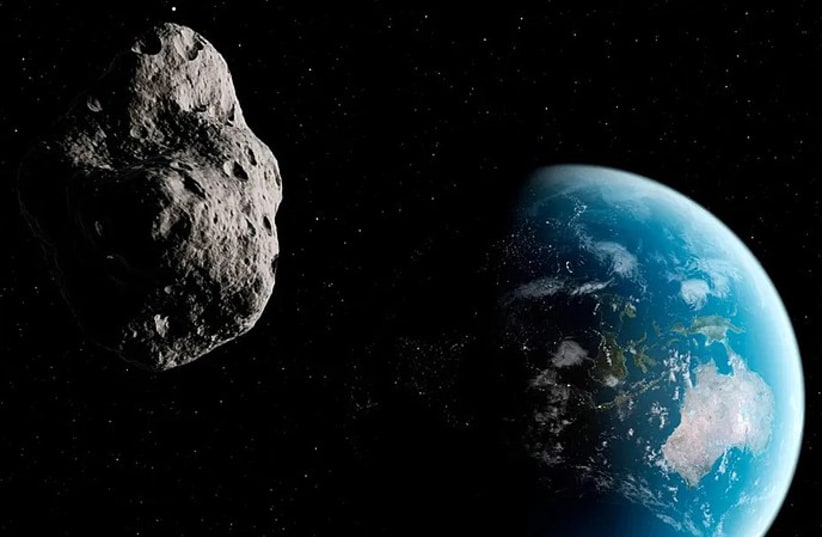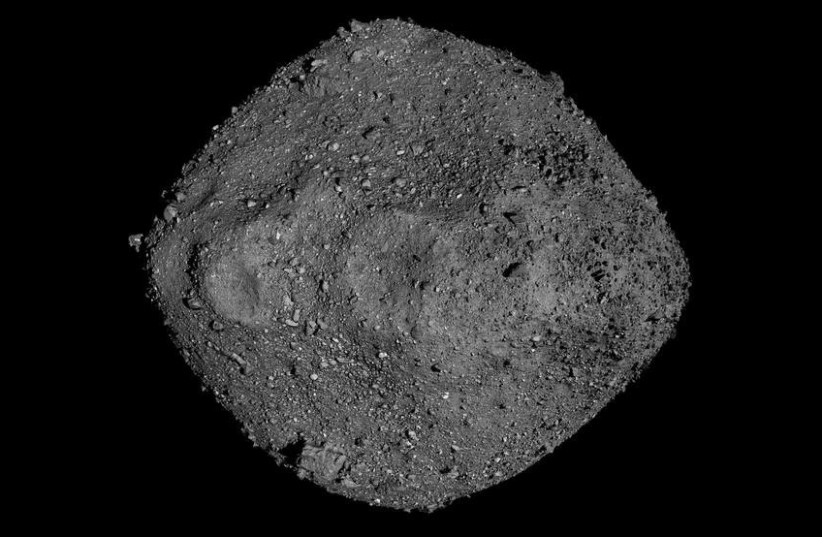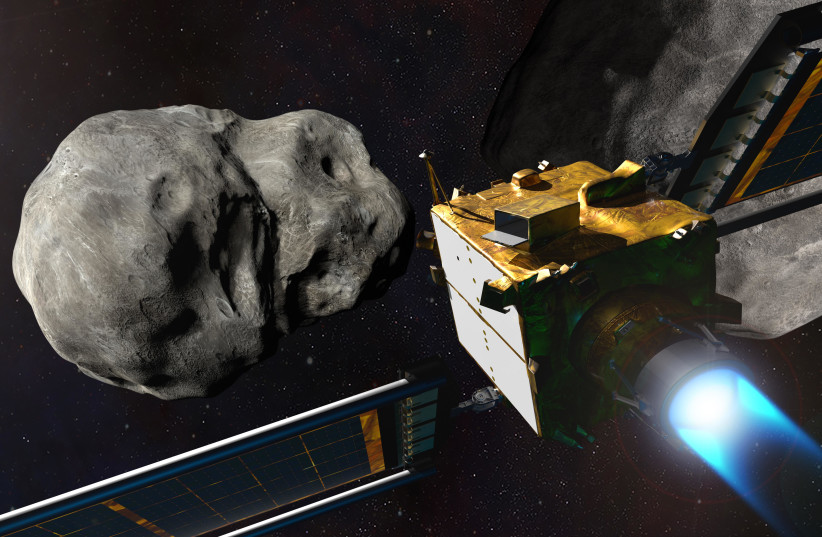Two small asteroids each around the size of 22 emperor penguins stacked nose to toes are set to fly past the Earth this weekend.
The asteroids in question have been designated 2023 AT and 2023 AE1, according to the Center for Near-Earth Object Studies (CNEOS) at NASA's Jet Propulsion Laboratory (JPL).
In addition, as their name implies, both of these asteroids were discovered relatively recently, both of them being discovered and designated by scientists within the first 15 days of the new year.
How big is the asteroid coming toward Earth in 2023?
Both asteroids are rather small, as measured by NASA's estimates, and both are around the same size.
The diameters of both asteroids 2023 AT and 2023 AE1 measure roughly between just under 10 meters at minimum to 22 meters at maximum.
For comparison, consider the emperor penguin, the largest and proudest of the humble penguin species. These Antarctic-native flightless birds measure around 100 centimeters (or one meter) in height as adults. This means that asteroids 2023 AT and 2023 AE1 are each roughly 10-22 emperor penguins in diameter.
It should be noted that emperor penguins are also the heaviest of all penguins, but while we can't weigh the two asteroids, it is safe to say they should weigh at least slightly more than 22 emperor penguins.
The two asteroids do have a slight difference in speed.
The first, asteroid 2023 AT, which is set to pass by the Earth on Friday, January 20, is the faster of the two, which clocks in at around 7.23 kilometers per second, or 26,028 kilometers per hour.
Emperor penguins have an average swimming speed between six to nine kilometers per hour. This means that, at best, asteroid 2023 AT is barreling through space at a speed that's around 2,892 times faster than the swim speed of an emperor penguin.
The second asteroid, 2023 AE1, which is set to pass the Earth on Sunday, January 22, is a bit slower, flying at just 5.54 kilometers per second, or 19,944 kilometers per hour – meaning it's just 2,216 times faster than an emperor penguin.
Another thing to note is that both asteroids will come amid Penguin Awareness Day, which is observed at some zoos on January 21.
Will an asteroid hit the Earth in 2023?
Penguins are often a big hit at zoos and in successful movies like Happy Feet, and are generally a big hit with people all around.
However, asteroid impacts are not such big hits – aside from hit meaning impact. But luckily, neither asteroid will hit the Earth – and even if it did, it would likely cause little to no damage, to the extent that an actual emperor penguin may pose a bigger danger to you than these asteroids.
Asteroid 2023 AE1 is set to make the closest flyby out of the two this weekend, with NASA estimating that it will pass just a little under 1.5 million kilometers away from the Earth.
On a cosmic scale, this is a bit close. Sure, it isn't as close as the Moon, which orbits the Earth at an average distance of 384,000 kilometers. But it is close enough to be comparable to NASA's James Webb Space Telescope, which also is a similar distance away.
But that aside, these asteroids would be basically harmless should they actually impact into the Earth.
According to research from the Davidson Institute of Science, the educational arm of Israel's Weizmann Institute of Science, an asteroid 140 meters in diameter or more would release an amount of energy at least a thousand times greater than that released by the first atomic bomb if it impacted Earth.
An even larger asteroid that's over 300 meters wide – like the Apophis asteroid – could destroy an entire continent. An asteroid over a kilometer in width – like asteroid 138971 (2001 CB21), which passed the Earth in early March 2022 – could trigger a worldwide cataclysm.
Small asteroids like 2023 AT and 2023 AE1 wouldn't make it past the atmosphere before burning up, leaving behind little to no fragments.
Don't believe me? Consider the very real and very recent asteroid impacts that actually did happen just last year.
Back in March 2022, a small asteroid around half the size of a giraffe known as 2022 EB5 hit the Earth just hours after its discovery. But given how small it was, it didn't exactly result in any damage.
More recently, in late November 2022, tiny asteroid 2022 WJ1 harmlessly exploded into fragments that scattered around Lake Ontario. NASA had predicted that this small meter-long asteroid would impact this location and knew there wouldn't be any harm from it.
In fact, rather than an asteroid, you are far more likely to be struck and hurt by a projectile thrown by penguins – since these aquatic waterfowl tend to defecate by firing their waste out their rectums at speeds that some scientists have estimated as reaching as high as 2 meters per second.
When is the next asteroid predicted to hit the Earth?
Not for a very, very long time, at least in terms of apocalyptic-level collisions.
NASA has checked the numbers. According to them, Earth, and its emperor penguin population, is safe from any catastrophic asteroid impacts for the next century, meaning no asteroid-induced Armageddon is on its way.
Which asteroid could potentially hit Earth?
At this moment, scientists don't know for sure. However, there are a few candidates for the most dangerous asteroid for the planet.
One of the most dangerous asteroids at the time of writing is the gigantic 500-meter-wide asteroid Bennu, which has an orbit that can cross with Earth's own.
If this asteroid impacted the Earth, the result would be catastrophic – but as far as NASA is aware, this won't be for a long time, if ever.
Do we have any way to stop an asteroid from hitting the Earth?
We just might, thanks to the hard work of scientists around the world. And no, it doesn't involve emperor penguins.
The field of planetary defense is specifically organized to find ways of keeping the Earth safe from asteroids and scientists at NASA and across the globe are hard at work trying to do just that.
Most notably, this has involved pioneering the exciting technique of asteroid deflection, which uses kinetic energy through vehicular collision to ever so slightly change an asteroid's orbital path, meaning it would, in theory, no longer be set to crash into Earth but instead fly past it.
In layman's terms, NASA decided to make a spacecraft punch an asteroid to make it move out of the way.
In fact, that is exactly what recently happened in September in NASA's landmark Double Asteroid Redirection Test (DART) Mission, which tested out this theory on a faraway asteroid Dimorphous in the Didymous system.
And according to the results, the DART Mission was a success, managing to alter the asteroid's orbit.
And NASA isn't alone in this either. China is also getting ready to test out its own asteroid deflection mission, set to launch in 2025.
And with scientists discovering more asteroids and getting a better picture of our many rocky neighbors in space – such as the asteroid that recently photobombed the Hubble Space Telescope – further advances should keep coming.
All in all, it seems that humanity is working on building the arsenal it needs to tame the asteroid menace lying in space, the final frontier.



